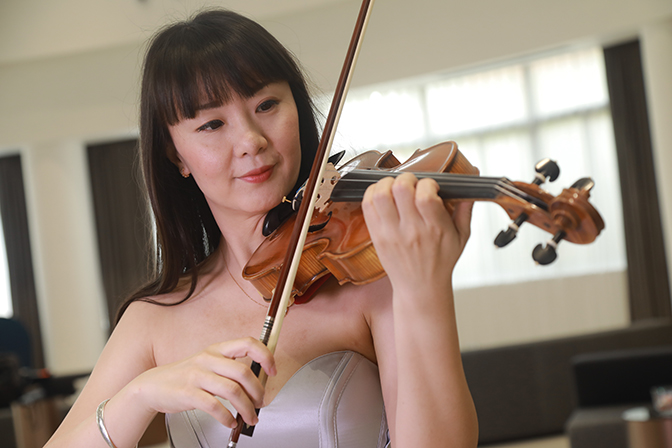
The violin is the most popular western instrument in music teaching and is known as the 'queen' of instruments. The modern violin has a history of more than 300 years. Its timbre is sweet, bright and lustrous, full of musicality, and highly expressive. It has a wide range, which can play both solo and ensemble, and it occupies a significant position in the orchestra.
The development of violin playing technology is relatively mature and perfect. Nowadays, when it comes to the violin, most people's concept still stays on the xylophone. They also choose the xylophone when they learn to play. However, with the development of science and technology and the society progress, modern electronic music has combined with the ancient string instrument to become an electroacoustic violin. A few decades after its birth, it has been favoured by more and more fashionable young people and widely used in public performances because of its provocative traditional changeable shape and unique timbre with electronic flavour. The following introduces the electroacoustic violin from the aspects of pronunciation principle, works and play skills.
In string instruments, there are many ways to excite string vibration. Such as rubbing the strings with a bow, being used for violin (cello, viola, violin, double bass), erhu, etc.; striking the strings for piano and xylophone; plucking the strings for guitar, san xian, etc. Their common feature is that their instrument structure is composed of two parts: the string and the soundbox (or soundboard). We can decompose the violin into the parts of the string and the soundbox to illustrate the pronunciation principle of the electroacoustic violin. The string-pulling system of the violin is equivalent to the signal source.
The electronic violin comprises a solid wood violin frame without a resonance box, strings and violin accessories. Under the lines are equipped with electromagnetic sensors, circuit device boxes and other devices. When the string is moved and displaced (a ferromagnetic substance), an induced electromotive force is immediately generated in the electromagnetic sensor. The electromotive force is pre-amplified, filtered and shaped, then subjected to secondary amplification and sent out in an electrical signal. When the receiver receives the electroacoustic signal carrying string vibration, it will be sent to the power amplifier for power amplification. Then the electroacoustic transducer drives the soundbox to emit sound. Obviously, through the above description, we can see that for the electroacoustic violin, the source of its tone quality is the string's vibration. Different from the traditional violin, they do not have the timbre brought by the soundbox. When the electroacoustic violin is not connected to the power supply, the volume is only one-eighth of the violin. So more support for the later electroacoustic effector equipment is needed.
The relationship between electroacoustic violin works and violin electronic music works is subordinate. By 2000, more than 200 works had been created for solo violin and electronic music, and the number of works is considerable. However, many violinists know little about this form of work.
Works created for solo violin and electronic music began in the 1950s. The earliest solo violin and electronic music work was a capriccio for Vidin and Two Sound Tracks1, composed by Dutch composer Henk Badings in 1952. This is also one of the earliest attempts to combine traditional instruments with electronic music. The earliest work combining violin and computer work was a lyrical variation, Lyric Variations for Violin and Computer, created by James Landey between 1965 to 1968.
In the late 1970s, with the development of personal computers, the computer has gradually become one of the most popular music-making tools.